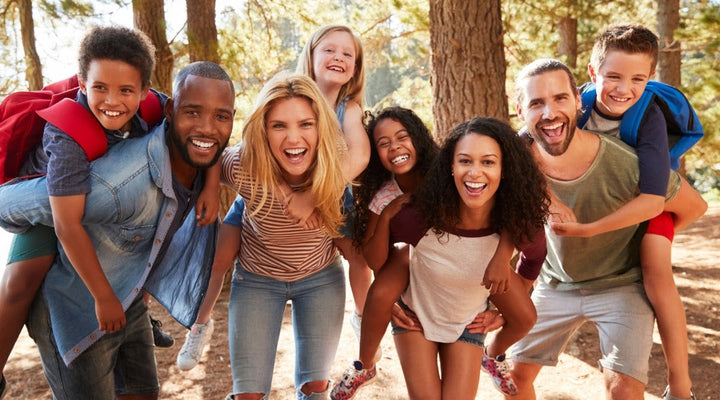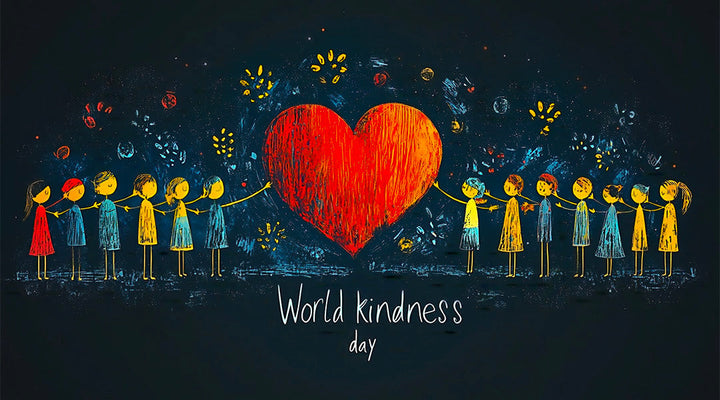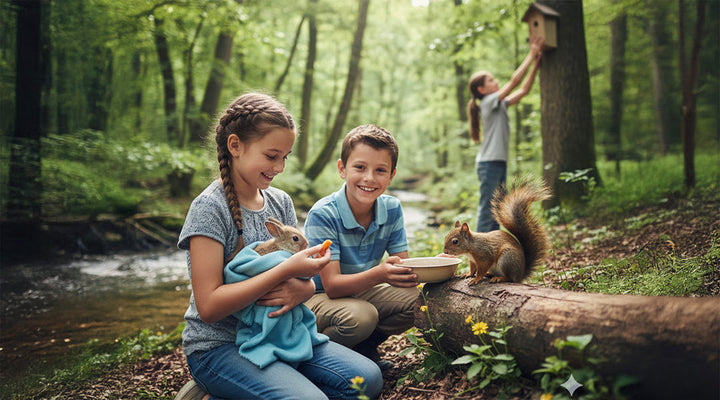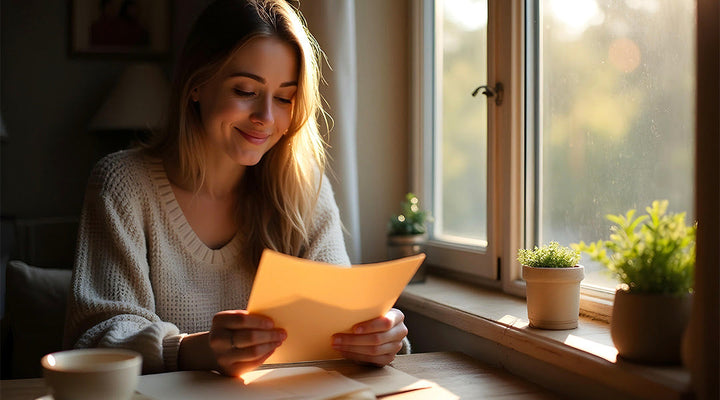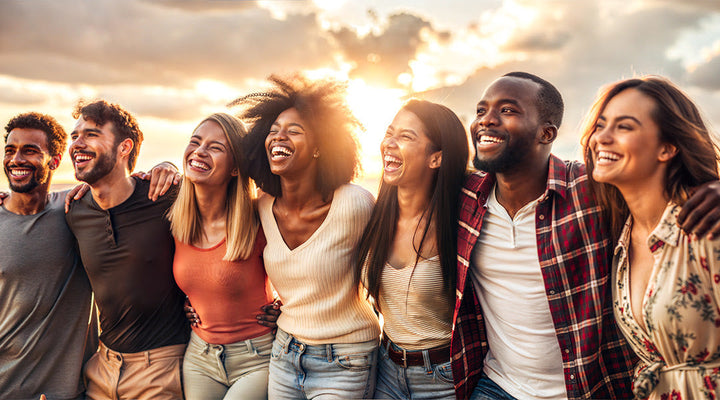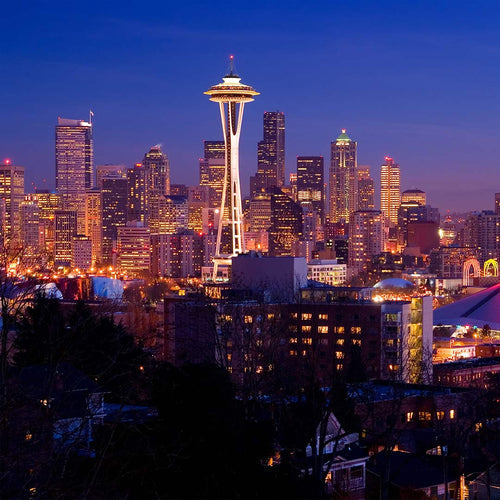
Beyond Starbucks - A Look At Seattle’s Famed Coffee Culture
What do you think of when you hear the city name, Seattle?
Many associate the city with rain. In fact a common myth about Seattle is that it rains daily here.
If you’ve assumed the same, would it surprise you to know cities like New York City, Chicago, Houston, and Atlanta all receive significantly more rainfall annually compared to Seattle?
But, if you’re still worried about being washed away when visiting, perhaps knowing the good folks of Seattle buy more pairs of sunglasses per capita than any other city in the US will make your opinion of the area a bit more sunny?
Music lovers perhaps associate Seattle with names like Jimi Hendrix, Nirvana, Pearl Jam, Foo Fighters, Dave Matthews Band, even Ray Charles and Bing Crosby. And, this list merely serves as a starting point with an extensively rich amount of talent having emerged from the Emerald City over the years.
Sports enthusiasts likely recognize Seattle’s many professional team names: the Seahawks of the NFL, the Mariners of MLB, the Storm of the WNBA, the Sounders and the Ol Reign of the MLS and the NWSL, and the Kraken of the NHL. Popular sights and attractions many think of in conjunction with Seattle include:
Popular sights and attractions many think of in conjunction with Seattle include:
- The Space Needle, both a popular attraction and a common sight in Seattle’s skyline which was originally sketched on a table napkin.
- The Governor Albert D. Rossellini (or the Evergreen Point) Bridge, at 1.4 miles it is the longest floating bridge in the entire world.
- Pike Place Market, one of the oldest continually running open (farmer’s) markets in the country, Pike Place is vast, interesting, and fun, containing more than 220 independent shops and restaurants, 150 craftspeople, 70 farmers, 60 permitted buskers, and 450 residents. The market is rightly termed a neighborhood in itself, one locals and visitors know as a must-see/experience destination.
Pike Place Market is also home to Starbucks, the first of the chain’s stores opening here in 1971.
And, while coffee fans likely think of Seattle and Starbucks as practically synonymous, the truth is this city’s coffee community started long before and spans significantly wider than the presence of Starbucks alone.
In fact, aside from the many exciting historical facts and alluring talent and attractions the city boasts still today, Seattle is mostly known as the coffee capital of the US.
And, with that in mind, this is the lens through which we’d like to explore this amazing city!
Tradition and Temps

We’ve got coffee shops in most American cities. Many of us have even made brewing the perfect in-home cup an art, so when it comes to coffee culture, why Seattle?
What makes this city such a coffee hub, the coffee capital of the US?
Starbucks didn’t open until 1971 in Seattle, so what can we really attribute this city’s coffee title to?
As we’ve scoured source after source, from the public opinion of Seattle natives to the chronicled history of the city, we’ve found two things that stand out above all else as the potential root reasons for why Seattle is seated above the rest, a mug above if you will, when it comes to our beloved java!
First, there’s tradition, or history:
With many east coast settlers having British roots, tea was said to be the OG of beverages in the earliest years of the US. However, before our official independence in 1776, taxes on tea rose, sparking interest in other beverages, like coffee.
Some attribute this shift as the founding of all coffee culture in the US, and whether this is true or not, what we can say for certain is that the pacific northwest was indeed a hub for trade, specifically spices, teas, and coffee. Dating back as far as 1895, Oscar Delaloyes was said to have pan roasted coffee beans in Seattle, operating first out of a cart, the pacific northwest’s first coffee cart, some would say, before he later opened Seattle Tea & Coffee in the famous Pike Place Market.
Dating back as far as 1895, Oscar Delaloyes was said to have pan roasted coffee beans in Seattle, operating first out of a cart, the pacific northwest’s first coffee cart, some would say, before he later opened Seattle Tea & Coffee in the famous Pike Place Market.
But, it wasn’t until just after the middle of the 20th century when coffee truly exploded in Seattle.
During the 1960’s and 70’s, people found themselves looking to gather, looking to change the world as they met with others, sharing and discussing pertinent ideas and information.
And, what better place to do so than a coffeehouse?
In the 1600-1700’s coffeehouses were said to be “engines of creation,” then driving the Enlightenment. And with this notion in mind, cafes gained popularity in the US when societal norms began being questioned.
This demand for meeting places prompted a surge in the number of coffee houses in Seattle, most notably leading to the opening of well-known cafes like The Last Exit in 1967 and Cafe Allegro (still popular today) in 1975.

Then, the opening of Peet’s Coffee in California in 1966, with their focus on the varied differences in coffee beans from distinct locations around the world, inspired three coffee connoisseurs from Seattle to purchase beans from Peet’s in bulk to sell in their store in 1971.
In choosing a name for their shop, the three went nautical and decided to name it after the first mate in Moby Dick. Do you know what this first mate’s name was? Starbuck.
After a few years, the partners decided to sell more than whole beans, prompting the desire to open a location in Pike Place Market in 1976. Now considered their original location, it was here that Starbucks began selling individual beverages in addition to whole bean coffee.
Starbucks was one of several coffee houses operating as microroasters, roasting beans on site, a practice that soon caught on, leading to micro roasters setting up shop all around the city.
The 1970’s and 80’s saw a large number of roasters establishing locations throughout Seattle, and this second wave roasting boom, as it’s been termed, brought about a love throughout the city for darker roasts.
As Starbucks embraced this love for darker roasts, the company is said to have expanded greatly, experiencing much growth serving these more full-bodied flavors.
Then, varying roasts paved the way for yet another wave when experimentation with higher quality green coffee and lighter roasting times and temperatures began.

And, though Starbucks leads the world as the largest coffeehouse chain, Seattle natives, especially in the 1990’s, began to venture out from what they typically viewed as conformity in the Starbucks brand in search of independent roasters and cafes.
As Emerald City natives searched for these local, independent shops, this demand led to the opening of more microroasters, more cafes, and a desire to push boundaries, perfect flavors, and truly find all this magnificent bean had to offer.
Many say this is when brewing coffee in Seattle became an art, a practice steeped in experimentation and scientific discovery, a challenge to bring out the most unique, best, and unparalleled properties of the beans, creating some of the best coffee you’ll ever sip.
And, while these progressions in culture and concept certainly shaped the way coffee is enjoyed in Seattle and around the world, there’s another factor in this coffee equation that can’t be ignored.
In Seattle, temperature also seems to play a part in coffee culture. Well, actually it’s the weather in general, not just the temps, but we hope you’ll overlook this for the sake of alliteration.
Though we pointed out in the intro how Seattle’s typical label of being a rainy city isn’t as bad as it’s made out to be, the temps and feel of the city can’t exactly be equated with a tropical paradise either.
Seattle is situated in an area known as a convergence zone, where varying streams of air (hot, cold, and moist) collide. Then, with the moisture from Puget Sound combined with the borders of the Cascade and Olympic mountains as well as the nearby, stunning Mt. Rainier, Seattle is seemingly seated beneath a perpetual cloud.
Then, with the moisture from Puget Sound combined with the borders of the Cascade and Olympic mountains as well as the nearby, stunning Mt. Rainier, Seattle is seemingly seated beneath a perpetual cloud.
While this doesn't always lead to the intense and heavy rainfall mythically associated with the city, it does account for cooler temps and a whole lot of cloud cover. And, these conditions, many believe, make the perfect setting for a vibrant coffee culture.
In fact, overcast, semi-chilly days that prompt the need for a warm cup of joe are said to be the inspiration behind the opening of some iconic coffee shops in Seattle: Cafe Encore in 1958, The Place Next Door in 1959, and El Matador in 1960.
Perhaps some may conclude the late 50’s and early 60’s must’ve been some damp and chilly years, but as Seattle is said to have the most extreme dark seasons in the country, losing light at a faster rate than most cities in the contiguous US, it seems these conditions make most any day the right day for coffee.
Seattle locals, perhaps you can weigh in on the stats of your city?
Do you break out your sunnies for those breaks in the clouds, then return to a cup of joe simply due to cloud cover and temperature, or does your love of java stem from the fact that Seattle just does it right…with some of the best cafes and coffee houses in all of America?
A Tour of Seattle’s Coffee Community

While we’re not speaking as Seattle natives, we certainly believe it’s more than history and weather driving this city’s status as one of the best places in the country to grab a great cup of joe.
Coffee tourism professional, Lucas Petrin, states “to build a local coffee culture, it takes just one or a small handful of really good shops that source beans from all over the world, especially if they also have the ability and ingenuity to roast beans themselves, that and openness to lots of experimentation.”
Ability, ingenuity, openness to experimentation…there might not be a better way to describe the coffee community and culture that thrives in the Emerald City.
Many tourists flock to Pike Place Market for a view of the original, flagship, Starbucks.
But, while this company has certainly contributed to the coffee landscape in Seattle, natives seek out local cafes and coffeehouses when looking for the following:
- A place to gather
- A delicious way to experience organic, local ingredients used in carefully crafting one of a kind coffee drinks
- Ways to learn about and sample varying roasts and brewing methods
- Hearing from knowledgeable baristas about regions, roasts, and how each barista has perfected their custom craft
As far as a publicly ranked coffeehouse, Storyville Coffee was voted the best coffee shop by WalletHub after evaluating the top 100 US cities according to their coffee cultures.

Earning the title of America’s number one roaster and Seattle’s number one coffee shop, Storyville sources the top 2% of beans in the world, and customers describe the brews here as “smooth, possessing a slight caramel note, complex, and well-balanced.” Others claim the baristas make a wonderful cup with a french press.
Connection and creativity are the theme at beloved locations like The Station, Black Coffee Northwest, and Resistencia Coffee, each said to have neighborhood spaces for art and activism.
For those looking to learn, Seattle Coffee Works offers cupping lessons for those seeking to distinguish the flavors in specific brews. And, La Marzocco Espresso Lab takes a hands-on approach to learning, allowing patrons to pull their own espresso shots, as well as hosting classes and demonstrations.
The first Seattle coffee shop to install such a system, Analog is a great place to get cold brew on tap. Analog features coffee on rotation from the best roasters in the city and sources any dairy they use fresh, from a nearby organic farm.
Locals who love a simple cup of coffee and a perfect spot to get cozy and stay for a while enjoy C&P Coffee. Also dubbed part coffee shop, part neighborhood hangout, C&P Coffee has live music, open mic nights, and other events in this “house-turned coffee shop.”
Specializing in coffee classics made with highest quality in mind, Victrola Coffee Roasters are known for their lattes, espressos, cappuccinos, and cortados. If you plan on visiting though, be prepared for a line, as some locals say Victrola has the best coffee in Seattle.
Victrola’s Capitol Hill location is known as a great place to grab a table and get some work done.

We mentioned Cafe Allegro as we described the history of coffee in Seattle, this cafe opening in 1975. Still a favorite today, Cafe Allegro is most popular with students as it’s located in the university district.
Tucked away in an alley, with ground floor, upstairs, and outdoor seating, Cafe Allegro is the perfect hole-in-the-wall hot-spot with incredible coffee from beans sourced only from small family farms all around the world. And, did we mention they also roast right in the cafe, for the freshest, most precise flavors?
For exceptional add-ins and unique offerings, Empire Roasters & Records, a cafe complete with a record store upstairs, makes their own cashew-milk in house and has menu favorites like a cayenne mocha, a lavender latte, a sweet matcha latte, and of course a cashew milk latte.
Adding one more location that locals claim is a must-try, Hello Em is a cafe in Seattle’s International District Little Saigon. Banh mis sandwiches and Vietnamese coffee are the classic favorite pairing from Hello Em, but be sure to try other favorites like an iced coffee with egg cloud or a coconut latte with coco cream.
Then, if you really want to get the Seattle coffee culture experience, you can try ordering like a local!
What do locals like?
Types of beans, milks, temperatures, and brewing methods are all important in Seattle…and for any coffee connoisseur, right?
But, when it comes to methods, pour-overs are a staple in this city. And, on sunny days, cold brew is a classic chilled selection, especially in those cafes where it’s served on tap.
As we highlighted in a few of the cafe locations above, classic espresso-based coffee drinks are also fan favorites in Seattle. Options like lattes and cappuccinos, and of course the simple, perfectly pulled, crema topped espresso shot are all common when Seattle natives order their faves.
And, if you’re looking for latte art, Seattle steps up here as well.
Aside from many shops showcasing work from local artists, baristas enjoy working their own magic when crafting not only a tasty cup, but a beautiful one!
For history, innovation, and dedicated art in every cup, Seattle is truly the coffee capital of the US!
Check out Lifeboost Coffee Medium Roast.
- https://www.seattlesouthside.com/does-it-always-rain-in-seattle/
- https://happytowander.com/seattle-fun-interesting-facts/
- https://www.seattlemet.com/arts-and-culture/2018/11/an-introduction-to-the-seattle-sound
- https://www.argosycruises.com/seattles-6-professional-sports-teams/#
- https://www.hockeydb.com/stte/seattle-kraken-12884.html
- https://travellemming.com/pike-place-market/#
- https://www.pikeplacemarket.org/about-pike-place-market/plan-your-visit/#
- https://www.starbucks.com/about-us/
- https://theculturetrip.com/north-america/usa/washington/articles/a-brief-history-of-coffee-in-seattle/
- https://conversational-leadership.net/coffee-houses/#
- https://thekeep.eiu.edu/cgi/viewcontent.cgi?article=1186&context=the_councilor#
- https://www.seattlecoffeegear.com/blog/2018/09/25/coffee-history-seattle/#
- https://www.britannica.com/topic/Starbucks
- https://visitseattle.org/blog/mt-rainier-national-park/#
- https://www.amli.com/blog/why-does-it-rain-so-muchin-seattle#
- https://www.seattletimes.com/seattle-news/weather/partly-sunny-or-partly-cloudy-the-5-questions-the-weather-service-hears-most/#
- https://www.q13fox.com/news/the-big-dark-wednesday-marks-last-6-p-m-seattle-sunset-until-march
- https://seattletravel.com/weather/
- https://www.visittheusa.com/experience/insiders-guide-coffee-culture-seattle
- https://www.farandwide.com/s/best-coffee-cities-0458725a65ae4ffd
- https://storyville.com/pages/pike-place-market
- https://www.timeout.com/seattle/restaurants/best-seattle-coffee
- https://seattle.eater.com/maps/essential-coffee-shops-seattle-cafes
- https://analogcoffee.com/
- https://travellemming.com/seattle-coffee-shops/
- https://explorewashingtonstate.com/exploring-coffee-culture-in-seattle/
- https://wheatlesswanderlust.com/best-coffee-shops-in-seattle/
- https://www.empireespresso.coffee/menus
- References for the article to confirm data and information.






